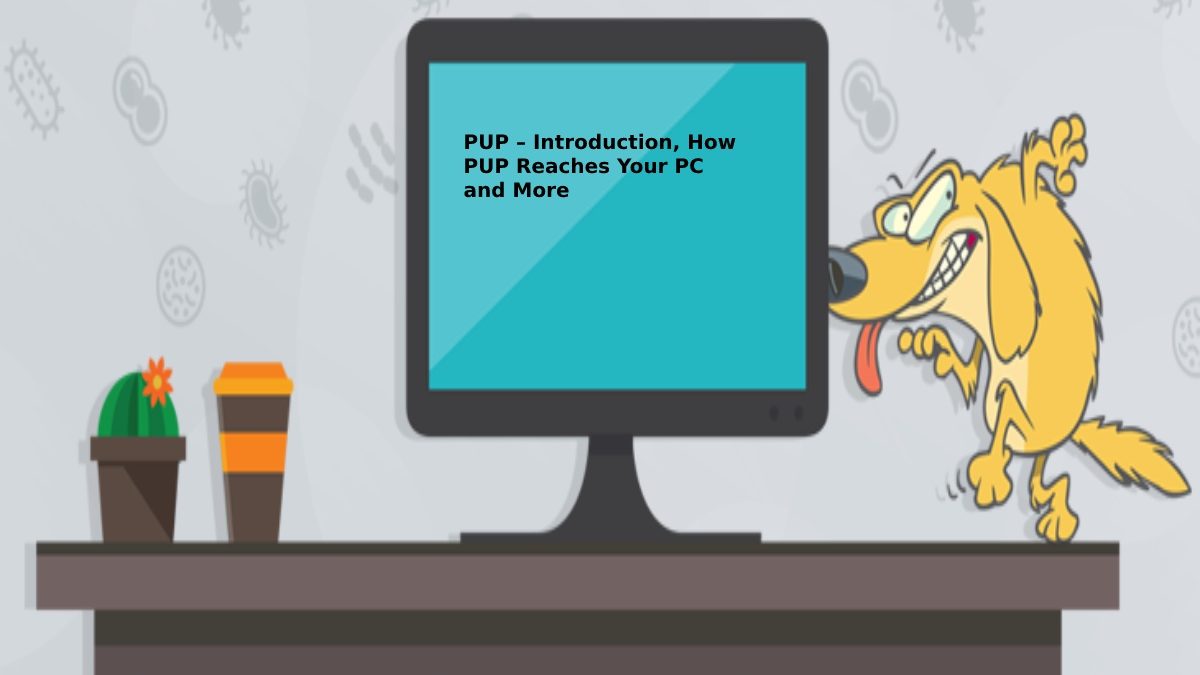Table of Contents
Introduction
PUP is a potentially unwanted program, often installed when other software is installed on your computer. PUP usually acts as a marketing tool and continually adjusts browser settings or displays unwanted ads. The most common form of PUP is hackers. The unwanted program is most likely referred to as PUP.
How PUP Reaches Your PC
Although pup software is usually harmless, it still hinders computer use, slows down and causes inconvenience to the user. Therefore, you should always be aware of partner programs downloaded with any software you install on your computer.
If you quickly click on the installation, you may easily get involved in overlooking the finer details and authorize approval of additional applications.
Often, even antivirus software doesn’t block PUP installation because, technically, it’s not a malicious program. It means that PUP is not as dangerous as a virus or Trojan horse, but you still have to ensure that PUP software is not installed unintentionally. Why? Here are some examples of what PUP software does to your computer:
Slow down your computer as it uses a great deal of memory
Show a lot of ads
Add toolbars to your browser, occupying a space of memory
Collects personal information
The Most Popular PUP Software
The most common form of PUP software is ad software, also known as hackers. The most famous example is toolbars, which are also called button bars. Most users probably installed a toolbar in their browser at some point. It often occurs unintentionally because toolbars are not usually used. They often end up on a computer by installing other free software.
Besides toolbars, other types of PUP software may seem ostensibly useful. Most of these programmes initiate a system examination. In doing so, they detect minor errors in the system and delete temporary files. The user usually has to upgrade to a paid product to improve.
While this practice is legal, it remains very suspicious and, most importantly, disconcerting. If you do not want to use the paid version of the product, the tool you can uninstall immediately because it does not offer you any benefit.
How Do You Recognize PUP Programs?
To detect PUP, it is first necessary to list the classification of unwanted programs. Security engineers examine lists of incorrect behaviours to determine whether the app is a pup. If one or more of these behaviours are found in different programs, they are classified as PUP programs.
PUP criteria include web violations such as modified search results, download violations or bookmark entries, and rejected ads, such as intrusive pop-ups. PUP software is also famous for some of the standard features that appear when installing the software, such as pre-filled checkboxes or recommendations for selecting many additional options.
How To Protect Yourself From An Unlikely Unwanted Program
Be careful when installing software: As we mentioned earlier, unwanted software usually accidentally enters your computer. If you install free software, this usually includes downloading partner programs used to fund the program.
To avoid installing PUP software, you must always be careful when installing free software. Read the dialogue boxes separately carefully. This step ensures that no malicious software inadvertently reaches your computer from you and protects you from PUP software.
Trust the original programs: as an additional precaution. Always download the software from the original manufacturer and not from the free software portals or downloads.
Functional uncertainty: many unwanted apps probably promise to improve your device or claim to speed up internet access significantly. It would help if you always had a helpful scepticism in these promises. If you’re not sure, an additional online search can give you clarity of vision.
Identify dark patterns: “dark patterns” are user interfaces that are deliberately configured to deceive people. The design is to trick the user into committing acts that he may never act of his own volition. For example, you may encounter it as a newsletter where it’s hard to find an unsubscribe button or a website where customer contact information is difficult to find.
Here are some examples of dark patterns:
Informal “seals” as indicators of credibility
Pre-filled checkboxes
Highlight the path requires by shading it (the skip button is inactive, and the “follow-up” button is dimmed)
Remove PUP software from a Windows PC
On Windows 10 computers, open Control Panel and select programs. You’ll then find a list of all the programs installed. Select the program you want to uninstall and click the Uninstall button in the top bar. Follow the uninstall instructions to remove the entire program from your computer.
Remove PUP software from your Mac or MacBook
When dealing with Apple PCs, the uninstallation process varies slightly. To remove uninstalled software from the Mac App Store. Open Finder and select the Name of your MacBook or Mac from the left menu bar. After that, you will have to open the computer’s internal hard drive.
You’ll find all the software installed in the Applications subsection. Then, drag and drop the desired program in the dock trash. It will uninstall the entire required program. Click on the trash with two fingers and select Empty Trash to clear the storage space.


